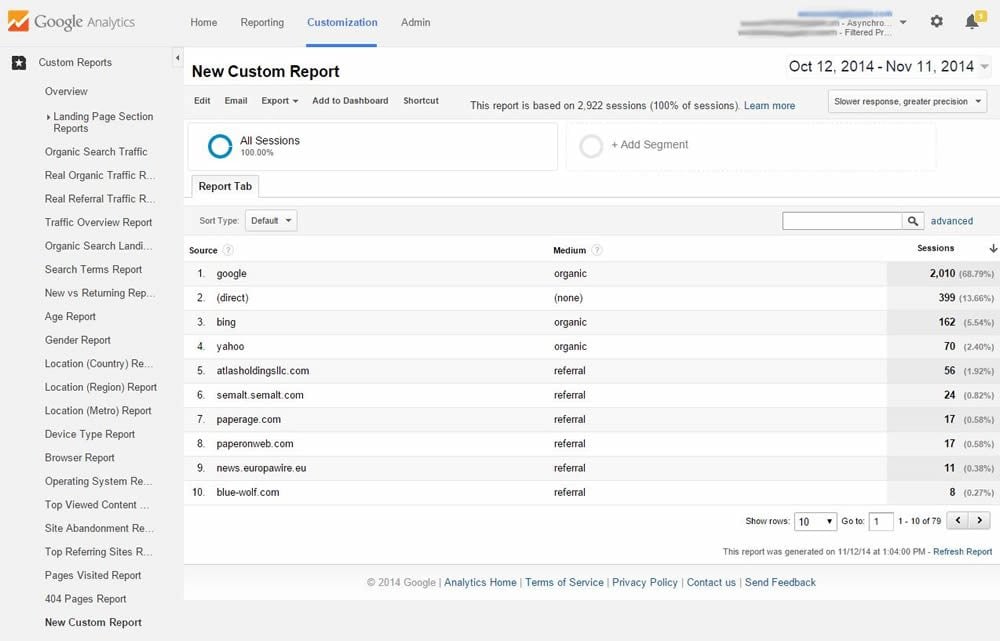Secondary Dimension in Google Analytics: Unlocking Advanced Metrics
Secondary Dimension in Google Analytics: Unlocking Advanced Metrics
Blog Article
Maximize Coverage Precision With Additional Measurement in Google Analytics
Comprehending how to take full advantage of reporting accuracy with additional measurements in Google Analytics can dramatically improve the depth of understandings derived from data analysis. By including second dimensions purposefully, marketing experts can uncover concealed patterns and correlations that might not be right away noticeable when assessing main metrics alone. This nuanced strategy enables a much more detailed understanding of user habits and campaign performance, leading the way for more targeted and reliable decision-making. The usage of secondary measurements holds the vital to opening a wide range of important details that can transform the performance of electronic marketing approaches.
Recognizing Additional Dimensions in Google Analytics
To boost information evaluation and gain much deeper understandings right into individual actions, comprehending second measurements in Google Analytics is vital. Secondary measurements allow users to sector and better study data beyond the primary measurement selected. By including secondary dimensions, analysts can refine their records to expose more thorough information regarding individual communications on an internet site. While the key dimension might show the complete number of web page views, adding a secondary measurement such as 'source/medium' can provide understandings into where the traffic originated from. This extra layer of details makes it possible for marketers to analyze the effectiveness of various advertising and marketing projects or networks in driving web traffic to the internet site.
Furthermore, recognizing additional dimensions is crucial for creating much more customized reports customized to particular service objectives. By picking the right combination of key and additional measurements, experts can reveal patterns, patterns, and connections that may or else remain covert. This nuanced method to data analysis equips services to make informed decisions based on a comprehensive understanding of user behavior across various measurements.

How to Use Second Dimensions
When leveraging additional dimensions in Google Analytics, the practical application includes picking certain data specifications to further fine-tune insights past the primary dimension's scope. To use secondary measurements efficiently, begin by accessing the report or dataset where you wish to dive deeper into the information. Bear in mind that second dimensions help provide context and granularity to your key measurement information, enabling you to remove more actionable and purposeful understandings from your Google Analytics records.
Leveraging Secondary Measurements for Insights
Utilizing additional measurements in Google Analytics enables a more thorough analysis of information, providing important insights beyond the main measurement's extent. By leveraging additional measurements, individuals can dive deeper into the performance metrics of their web site or app, revealing covert patterns and fads that might not be quickly apparent when just looking at main dimensions.
One secret benefit of utilizing additional measurements is the capacity to section and filter information a lot more exactly. This can assist marketing professionals and analysts better recognize the behavior of particular customer segments, such as brand-new site visitors versus returning site visitors, or web traffic coming from various geographical areas.
Additionally, additional measurements enable customers to contrast and contrast different information points within the same record, giving a more holistic sight of performance (Secondary Dimension in Google Analytics). As an example, coupling the main dimension of landing web pages with additional measurements like demographics or devices can expose which web pages are this content most efficient in engaging individuals on different gadgets or from different market teams.
Fundamentally, leveraging additional dimensions in Google Analytics encourages individuals to draw out richer understandings from their information, causing more educated decision-making and inevitably, boosted efficiency.
Finest Practices for Second Dimensions
When evaluating information in Google Analytics, including second measurements successfully enhances the depth of understandings originated from the main metrics. To make one of the most out of additional dimensions, it is vital to abide by finest techniques that make Click Here certain meaningful and precise reporting. It is essential to select second dimensions that straighten with the primary metric you are analyzing. Picking pertinent second dimensions helps in offering context and a clearer understanding of the information being analyzed.
Additionally, it is suggested to restrict the variety of secondary dimensions utilized in a solitary record to stay clear of frustrating the evaluation with way too much info. Concentrating on a couple of key second measurements at once can cause even more concentrated and actionable insights. Furthermore, consider experimenting with different combinations of secondary and key dimensions to uncover unique patterns and patterns that may not appear when considering the information alone.
Advanced Evaluation Methods With Additional Dimensions
Exploring detailed data relationships with the tactical application of secondary measurements can reveal nuanced insights that raise the depth of evaluation in Google Analytics. By combining second measurements with key information sets, advanced evaluation techniques can be used to extract useful information.
Furthermore, secondary dimensions can boost the evaluation of conversion paths by giving extra context. Understanding the different touchpoints a customer communicates with prior to converting can be critical in optimizing the consumer journey - Secondary Dimension in Google Analytics. By using second dimensions to look into specifics such as traffic sources or tools utilized, online marketers can customize strategies to target high-converting channels successfully
Verdict

To improve information evaluation and gain much deeper insights into individual actions, understanding secondary dimensions in Google Analytics is necessary - Secondary Dimension in Google Analytics. Secondary dimensions allow individuals to sector and better dissect data beyond the main measurement picked. While the primary dimension may show the complete number of page views, adding a secondary dimension such as 'source/medium' can supply understandings right into where the website traffic originated from.When leveraging secondary dimensions in Google Analytics, the sensible application entails selecting specific data specifications to additional refine understandings past the main measurement's range. Keep in mind that additional measurements assist offer context and granularity to your main measurement information, enabling you to draw out more significant and workable insights from your Google Analytics records
Report this page